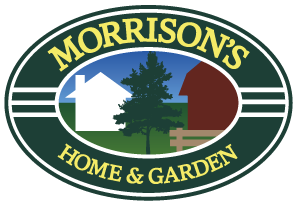RAISING BABY CHICKS
Shelter & Bedding
A housing unit for chicks, commonly known as a brooder, can be something as simple as a cardboard box. Your brooder should have solid walls at least 18 inches high to block drafts and be large enough that chicks can move about freely (roughly 2.5 sq ft per chick). A layer of pine shavings on the bottom will prevent legs from slipping & help to absorb droppings. NEVER use newspaper or cedar shavings.
Heat
Warmth is crucial to the survival of baby chicks. The most common way to provide this is with a heat lamp. We recommend using a red bulb to help reduce stress & keep them calm. During that first week the brooder should be kept between 90-95°F. Each week thereafter, decrease the temperature by 5° until they have their adult feathers (5-8 weeks). As always, check on your chicks throughout the day, their behavior will help guide you. If they are huddled together under the lamp, it is too cold and it should be lowered. If they are dispersed along the edges & don’t want to go under, the lamp is too hot and must be raised.
Water
NEVER LET YOUR CHICKS RUN OUT OF WATER!
Remember, chicks are messy & clumsy. They are going to kick shavings into their water as well as knock the whole thing over so make sure to check/replace it regularly.
FOOD
All of our egg laying chicks are vaccinated for Marek’s Disease and come from certified Pullorum-free hatcheries. Some prefer to feed their chicks a medicated starter crumble which helps prevent coccidiosis, a deadly parasitic disease (this medication is a PREVENTATIVE so make sure to keep their brooders CLEAN). Once chicks reach 8 weeks, they can be switched to a grower feed for another 8 weeks. Chickens can be fed regular layer pellets when they are four months old.
AFTER YOU TOUCH CHICKS, WASH YOUR HANDS SO YOU DON’T GET SICK!
Contact with live poultry can be a source of human Salmonella infections.
Salmonella germs can cause diarrheal illness in people that can be mild, severe, or even life-threatening.
Chicks and other live poultry can carry Salmonella germs and still appear healthy and clean.
Salmonella germs can shed in their droppings and can easily contaminate their bodies and everything in areas where birds live and roam.
PROTECT YOURSELF AND YOUR FAMILY FROM GERMS
DO:
Wash your hands thoroughly with soap and water right after touching live poultry or anything in the area where they live and roam.
Adults should supervise hand washing for young children.
If soap and water are not readily available, use hand sanitizer until you can wash your hands thoroughly with soap and water.
Clean any equipment or materials associated with raising or caring for live poultry outside the house, such as cages or feed or water containers.
DON’T:
Don’t let children younger than 5 years of age, elderly persons, or people with weak immune systems handle or touch chicks, or other live poultry.
Don’t let live poultry inside the house, in bathrooms or especially in areas where food or drink is prepared, served, or stored, such as kitchens, or outdoor patios.
Don’t snuggle or kiss the birds, touch your mouth, or eat or drink around live poultry.
For more information, call 1-800-CDC-INFO or visit www.cdc.gov





